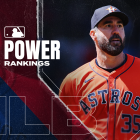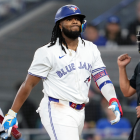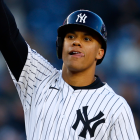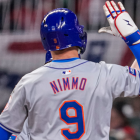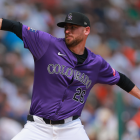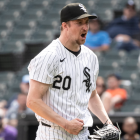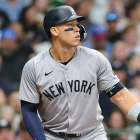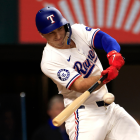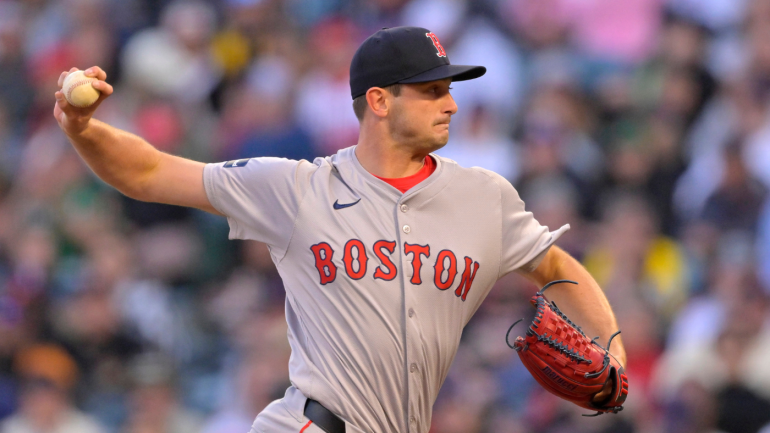
After a 78-84 record and a third last place finish in four years a season ago, the Boston Red Sox could not have asked for a better start to the 2024 season. They opened the season with a 10-game West Coast road trip, went 7-3, and allowed no more than two runs in six of the 10 games. In terms of ERA, it is the best 10-game start in Red Sox franchise history (they lost at home Tuesday to drop the season record to 7-4).
"Pitching-wise, we're different. Everybody knows it," manager Alex Cora said at the end of the road trip. "I'm not just saying we got this secret sauce now. The group did an outstanding job in the offseason. They bought into it in spring training. For the first road trip, it was amazing."
The Red Sox lead the majors with a 1.49 ERA, the franchise’s lowest mark ever through 10 games.
— J.P. Long (@SoxNotes) April 7, 2024
That is the lowest ERA for any team through 10 games since the 2005 Marlins (1.34) and the lowest for an AL team since the 1982 Angels (1.31).
Effective pitching is a breath of fresh air for a Red Sox team that ranked 21st in ERA last season and 25th the year before. Their park adjusted numbers were slightly better -- they ranked 19th and 24th in ERA+ the last two seasons, respectively -- but still pretty bad overall. Simply put, the Red Sox kept finishing at the bottom of the standings because they couldn't keep runs off the board.
To remedy that, the Red Sox brought in new leadership, not new pitchers. Sure, they did bring in new players, though top free-agent signing Lucas Giolito will miss the season following elbow surgery, so the new additions amount to a few relievers. The Red Sox also made somewhat of an effort to sign Jordan Montgomery in spring training, but they struck out there.
The most important changes took place in the front office and on the coaching staff. Chief baseball officer Chaim Bloom was fired and replaced by former reliever Craig Breslow, who is credited with overhauling the Chicago Cubs' pitching infrastructure. Pitching coach Dave Bush was let go soon after the season. He was eventually replaced by Andrew Bailey, Breslow's former teammate.
"Life's too short to turn down opportunities like this," Bailey said soon after being hired (via MLB.com). "I think sitting in the bullpen with Craig over parts of five seasons together as teammates and talking about how he was going to be a GM and I was like, 'Well, I'll be a bullpen coach, pitching coach, manager, whatever you want me to do' ... (I) think it's a pretty unique relationship."
Bailey spent the last four seasons as pitching coach with the San Francisco Giants and his teams were known for scaling back on fastballs and spamming hitters with breaking balls and offspeed pitches. On that West Coast road trip, Bailey's anti-fastball approach was evident with the Red Sox:
| Fastballs | Breaking balls | Offspeed | |
|---|---|---|---|
2023 Red Sox | 61.3% | 28.4% | 10.2% |
2024 Red Sox | 51.7% | 34.6% | 13.7% |
2023-24 MLB average | 55.4% | 31.2% | 13.3% |
The Red Sox went from throwing a comfortably above-average rate of fastballs last season to a comfortably below-average rate of fastballs this season. And again, the personnel hasn't changed much. Just about 90% of the innings thrown on the West Coast trip were thrown by pitchers who were with the Red Sox in 2023. It's a pitching change, not a pitcher change.
"The history of baseball suggests that fastballs in general have the most damage attached to them," Bailey told The Athletic last week. "So, looking at some fastball rates from last year, there's some low-hanging fruit there and leveraging our weapons that generate weak contact and swing-and-miss more often."
Bailey is correct, hitters typically do more damage against fastballs, and that's the logic behind the anti-fastball approach that has gained popularity in recent years. Here are the MLB averages against various pitch types since the start of last season:
| Fastballs | Breaking balls | Offspeed | |
|---|---|---|---|
Batting average | .267 | .222 | .230 |
Slugging percentage | .444 | .378 | .367 |
Barrels per PA | 6.1% | 4.8% | 4.3% |
Whiffs per swing | 20.4% | 32.9% | 31.9% |
A barrel, for lack of a better description, is the best possible contact in terms of exit velocity and launch angle. It's a ball hit hard on a line. A ball that is really squared up. Not surprisingly, hitters make better contact and whiff less against fastballs than they do against pitches that move. So, the Red Sox have taken to throwing more pitches that move and fewer fastballs. Simple, really.
With a wide lens, the 2024 Red Sox have finally caught up to the rest of the league with the anti-fastball approach. They're not breaking new ground. Teams like the Los Angeles Dodgers, Milwaukee Brewers, New York Yankees, Tampa Bay Rays, and Bailey's Giants began to scale back on fastballs and throw more breaking balls and changeups years ago. This is new to the Red Sox, not new overall.
And this is what needed to happen. Under Bailey and Breslow, the Red Sox needed to catch up to all the other smart teams around the league before they could begin to innovate themselves. The Red Sox really were behind the times pitching-wise the last few years. It was the single biggest reason they finished in last place three times in four years from 2020-23.
Spoiler: Boston will not finish the season with a sub-2.00 ERA as a team. They faced three unimposing offenses on the West Coast trip (Los Angeles Angels, Oakland Athletics, Seattle Mariners) in three pitcher-friendly ballparks. The early season pitching success is small sample size to the max. Good or bad, we shouldn't read too much into one road trip's worth of results.
The change in approach is real though. Leaning less on fastballs is something Bailey took with him from the Giants to the Red Sox, and it is something that is popular around the league. The Red Sox are getting more out of the pitchers they have than they did the last few years. That's the necessary first big step toward getting back into contention in the meat grinder that is the AL East.














